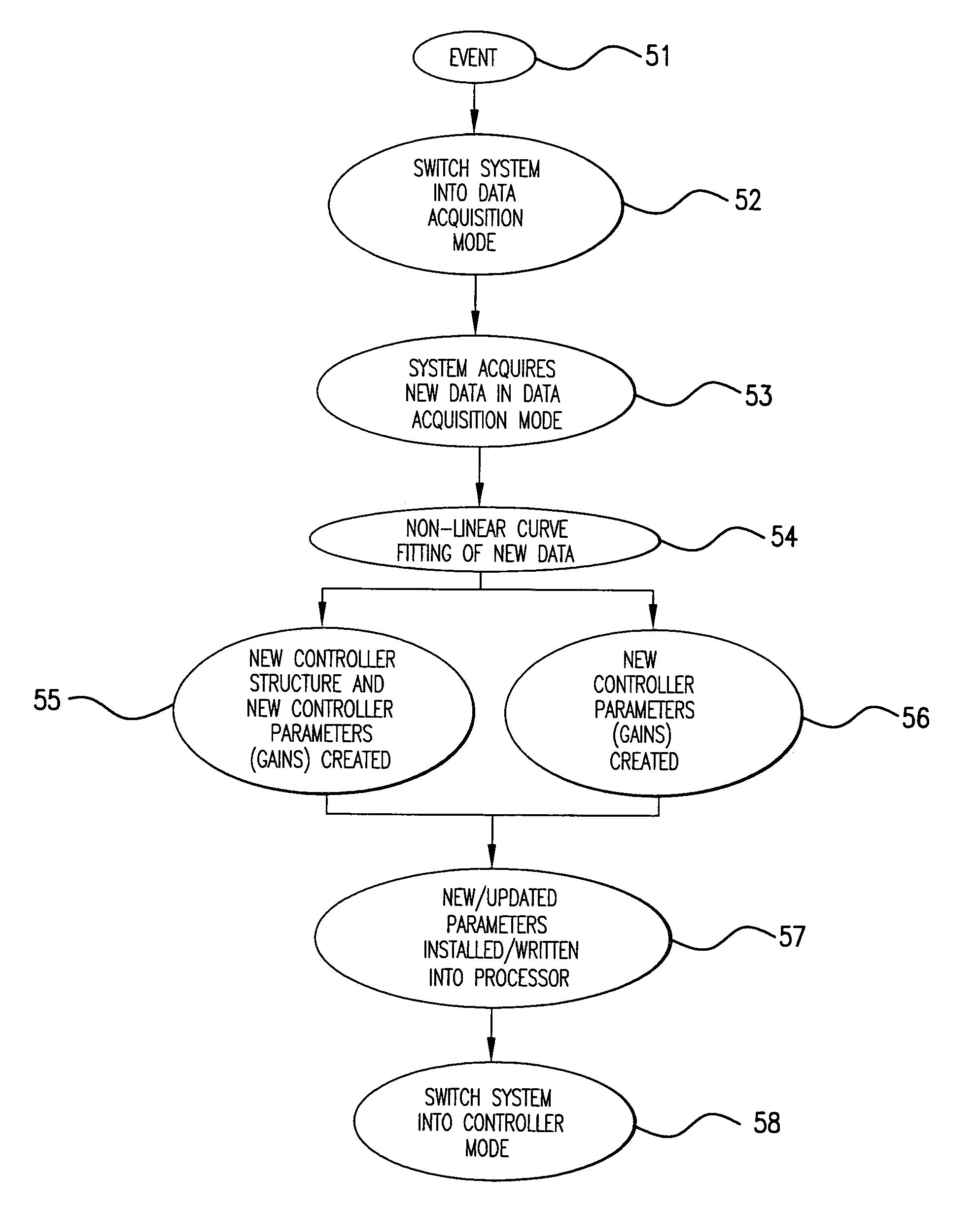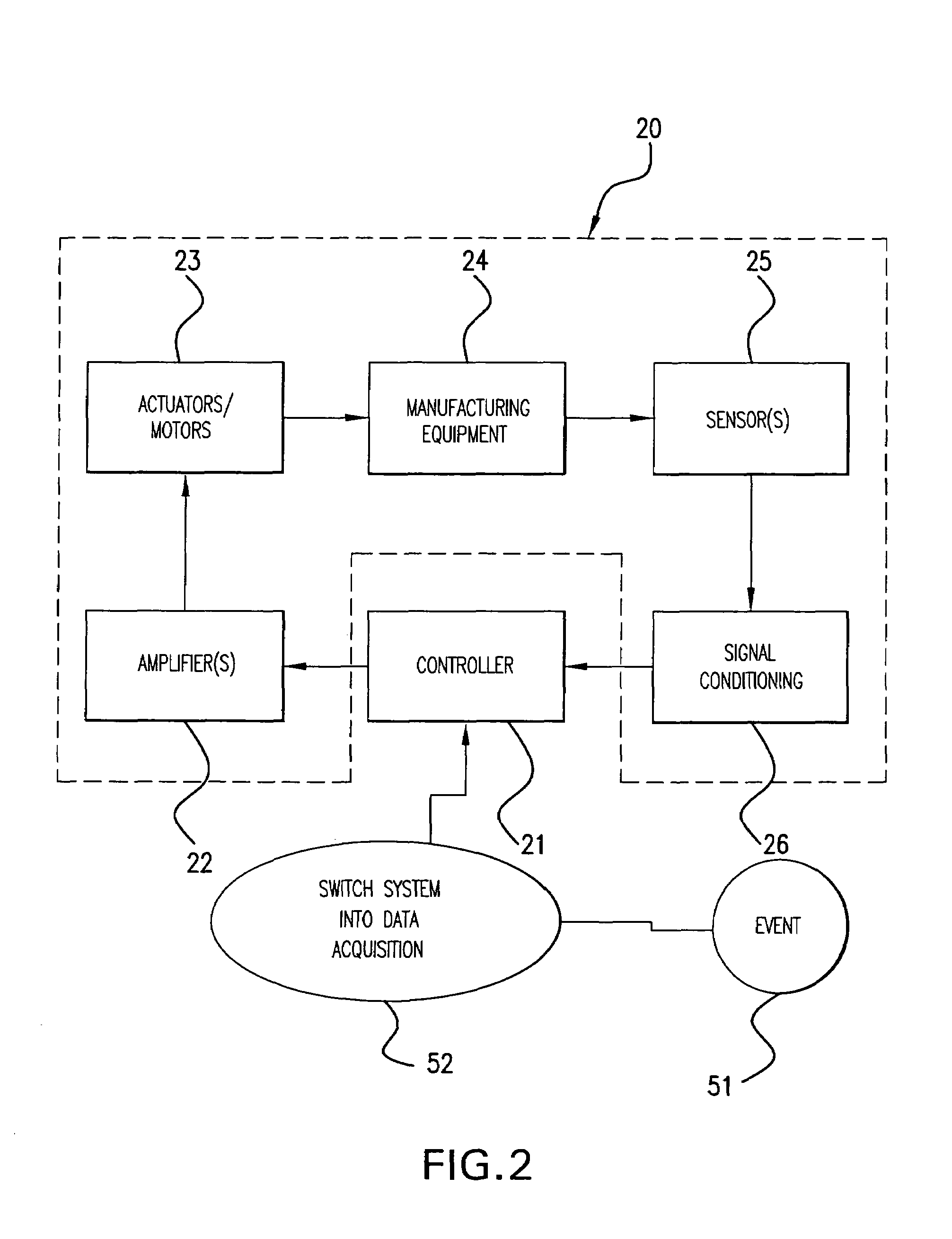Tuning control parameters of vibration reduction and motion control systems for fabrication equipment and robotic systems
a technology of motion control system and control parameter, which is applied in the direction of adaptive control, process and machine control, instruments, etc., can solve the problems of affecting the quality of the product, the defect or non-functionality of the equipment itself, and the inability to meet the requirements of the production process, so as to achieve the effect of minimal hardware addition
- Summary
- Abstract
- Description
- Claims
- Application Information
AI Technical Summary
Benefits of technology
Problems solved by technology
Method used
Image
Examples
Embodiment Construction
[0028]The systems and methods of the invention extend, for example, to fabrication equipment and robotic systems and to dealing with servo and tracking problems. The invention, in one regard, contemplates its application to command following, and does so in a sufficiently timely manner to allow it to be implemented in a typical semiconductor fabrication facility, although the invention is equally applicable to other scenarios, such as typical disturbance rejection problems. Thus, according to one aspect of the invention, a motion control system responds to some event, such as an operator command or automated detection of degraded performance by shifting the system into data acquisition mode. Such events, by way of example, might occur simply as a product of routine maintenance and / or daily line or plant shutdowns, or may occur in case of more serious, equipment malfunction-related causes. In this mode, transfer function data is collected by injecting signals into all relevant actuat...
PUM
 Login to View More
Login to View More Abstract
Description
Claims
Application Information
 Login to View More
Login to View More - R&D
- Intellectual Property
- Life Sciences
- Materials
- Tech Scout
- Unparalleled Data Quality
- Higher Quality Content
- 60% Fewer Hallucinations
Browse by: Latest US Patents, China's latest patents, Technical Efficacy Thesaurus, Application Domain, Technology Topic, Popular Technical Reports.
© 2025 PatSnap. All rights reserved.Legal|Privacy policy|Modern Slavery Act Transparency Statement|Sitemap|About US| Contact US: help@patsnap.com



